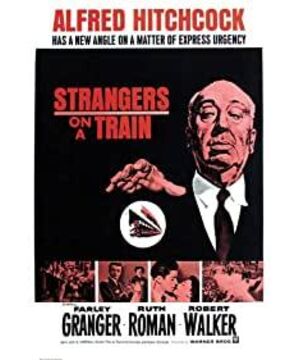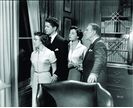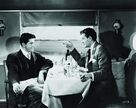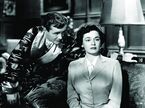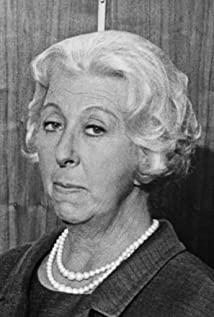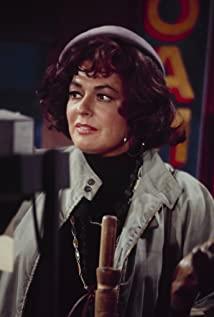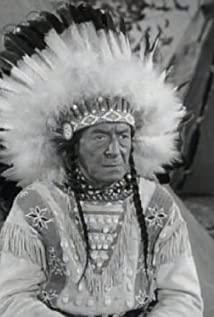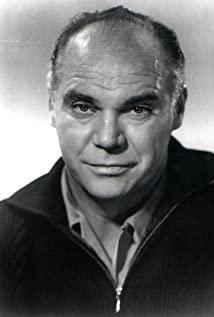"The Train Stranger" (1951) is one of the most important works in the director Alfred Hitchcock's mid-career (1940~1956). This article intends to analyze his lens language and suspense techniques, and contact the director's other films Let’s try to appreciate the Greek-style rhetorical strategies and core motifs. one. The Suspense Installation and Enchanting Mirror Language film is adapted from Patricia Highsmith's first novel. It tells a criminal story about murder in exchange (this wonderful idea has also been used for reference by many literary and film works afterwards) ). The well-known tennis player Guy Hines ran into Bruno Anthony on the train, who had a detailed knowledge of his private life. Bruno wants to kill his father, and Guy is trying to divorce his flamboyant wife Miriam in order to marry the Senator's daughter Anne Morton. Bruno came up with a horrific idea: the two men removed each other's murder targets, so that the police would have difficulty catching the real culprit, because one of them had an alibi, and the other "stranger" had no motive for the murder. Guy didn't take this crazy proposal to heart, but accidentally left his lighter on the seat when he hurried to get rid of the opponent. Bruno put it away, and soon strangled Miriam easily in the amusement park, and asked Guy to complete the other half of the plan. Despite the lack of evidence, the police still focused on Guy. Bruno followed Guy like a shadow. At the senator's dinner, Bruno exposed his enthusiasm for murder, terrified Anne's sister Barbara, and made Anne suspicious. Guy had no choice but to tell the ins and outs of the incident. At night, Guy sneaked into Bruno's house and tried to warn Bruno's father, but found that it was Bruno himself who was lying on the bed. He threatened to return Guy’s lighter to the scene of the crime in order to achieve the purpose of framing. The next day, the police decided to arrest Gay after he played a tennis match, while Bruno boarded the train to the city where the crime was committed. With the help of Barbara, Guy escaped the police outside the door and hurried to the amusement park. The two finally met at the merry-go-round. The policemen who followed shot and killed the operator by mistake, causing the merry-go-round to go into a speeding state. During the scuffle between the two, a staff member ventured into the facility and turned off the power. Guy was thrown out, and Bruno was crushed under the rubble of the collapsed Trojan horse. At this time, a murder witness appeared to identify Bruno, and the dead Bruno was holding the lighter in his loose left hand. At this point, the truth of the case became clear, and Guy got a blessing in disguise, and his love with Annie continued to progress. Hitchcock is an out-and-out formalist. He is good at accurately calculating and arranging all the elements in his film to achieve the effect he expected. He always devotes himself to designing the storyboard script: "I just want to fill the blank screen like a canvas. That's why I draw the sketches of the storyboard and props to the photographer." [1] In addition, Hitchcock also controls the editor in the palm of his hand: after shooting each scene, he only keeps the necessary shots in the film, so that there is only one way to make the film smooth. Naturally, and in line with the storyboard previously drawn by Greek style. The opening prelude of "The Train Strangers" is a classic example of formalist analysis. When the two men arrived at the train station, the shot was cut into close-up shots of the calves and shoes of the two men, and they were cross-edited between the two men walking from left to right and from right to left. Later, the two walked into the door separately in a low-position elevation lens. After an insert lens advancing along the train track, it dissolves into the interior of the carriage, showing the leather shoes of two people sitting opposite each other. The left and right positions are consistent with the previous cross-edited paragraphs. It was not until their shoes touched that their faces appeared in a panoramic double shot, with Guy (played by Farley Granger) on the left and Bruno (played by Robert Walker) on the right.
However, the audience does not need to wait until then to know the identity of the two. In the cross-cutting section, the film has encoded the corresponding information in the visual conventions. Westerners (and modern Chinese) have the habit of reading from left to right. Therefore, most classic narrative films are used to let positive characters (Guy in this film) draw from left to right. At this time, our eye movements Natural and comfortable, it is easy to subconsciously make positive judgments. On the contrary, the negative character (here, Bruno) usually enters the frame from right to left, and this direction of movement will make the audience's eyes feel a little uncomfortable. [2] At the same time, the color of the shoes of the two also implies their respective attributes of good and evil-the black leather shoes that Guy wears are a cultural code that refers to the traditional successful men, while Bruno's black and white shoes identify him As a rebel who left the traditional society.
The inserted shots advancing above the train tracks herald the protagonist's difficult and difficult future. The lens first shows a straight forward railroad track, and as the lens advances, a bifurcation comes into view. The train gradually deviated from the original track and drove onto the subtrack leading to the right side of the screen (in accordance with Bruno's direction and location). Immediately afterwards, the track became more complicated and chaotic, like a cobweb maze. This shot here highlights the self-sufficient, single, pure world in which Gay, as a professional athlete, suddenly invades and breaks into the chaotic state of a frantic outsider.
When Bruno followed Miriam in the amusement park until the "tunnel of love" (tunnel of love), the camera focused on the dark and gloomy tunnel wall. In the voiceover, Miriam and the two young men were chatting and laughing, and the viewer could only recognize the three figures from the shadows mapped on the background (wall of the cave). Bruno's figure entered the painting from the right side and gradually grew larger until it merged with the three of them. Then it switched to the picture at the exit of the tunnel. After a while, a shrill scream came...Here, Hitchcock provided us with a false suspense, waiting for Mili in anxiety (or expectantly) When Yam's ship sailed out of the tunnel, our heartstrings were tense. When the boat appeared, we realized that this was just a false alarm. In this false suspense episode, Hitchcock not only played with the expectations of the audience, but also delayed the appearance of the real murder. The famous murder scene was revealed indirectly by the video reflected on Miriam's dropped glasses. Hitchcock first took the location before the murder in Canoga Park in California, USA, and then used the large concave mirror in the studio to complete the deformed picture. After successfully committing the crime and leaving the amusement park, Bruno looked at his watch (displayed at 21:30). The close-up shot of this watch lasted for about 3 seconds. It was cut into a close-up shot of Guy raising his hand to look at the watch on the train. A smooth and natural implicit matching transition. The song "He Loves the Goat" hummed by the drunken man who rode on the train with Guy is also a metaphor for the progress of the subsequent plot. "He" refers to Bruno, and "goat" implies a scapegoat, which is Guy. When Guy returned home and was about to enter the door, he suddenly heard a erratic call. He turned his head and looked at the opposite perspective. Bruno was looming in the shadow of the iron gate. In this passage (including the following two sets of front and back shots), Guy is fixed in an abnormally inclined composition, while Bruno in the distant view is a regular horizontal composition. It should be noted that Bruno’s long-range shots are in line with Guy’s subjective perspective, but the close-up shots that Guy is in are not Bruno’s subjective shots (otherwise it should be a distant view), so it can only come from a lens that is often difficult to detect by the audience. Hidden the perspective of the narrator (ie the director), and the motivation for using the tilted composition must be consistent with the state of the character that Hitchcock tried to show-Guy's life that was gradually getting on track was once again disrupted by Bruno's shadow, and even overwhelmed. .
During the dialogue between Guy and Bruno, the scenes showing Guy all selected the camera positions within the iron fence. It uses "the unique ability of film language to confuse and invert the space" [3] to present Guy as being Prisoner behind an iron fence. The shadow of the large iron fence "cast" on the outer wall of Guy's house (actually the subjective shot of Guy looking at the house through the defocused iron fence) still symbolizes the impenetrable prison of the protagonist, just as he sees it. After arriving at the police, he made a subconscious dodge action: "You made me act like a criminal." In the narrative passage where Guy sneaked into Bruno's home and prepared to warn him of his "murder target," every shot is inseparable from the dark and high-contrast lighting, which is also one of the typical signs of film noir. The arrangement of hard light creates a strong visual contrast. The large darkness symbolizes unknown fear and uncontrollable evil. The half-dark faces of the characters also reflect the ambiguous morals of good and evil. All these are among the themes of "The Train Strangers".
Guy tiptoed up the stairs, and suddenly felt a big dog crouching in the middle. He was shocked in a cold sweat. Fortunately, the big dog didn't bring him any hindrance. This is another example of false suspense created by Hitchcock, which effectively prompts the audience's adrenaline to rise sharply, and at the same time diverts the viewer's attention from the target in the bedroom on the roof. A similar narrative delaying technique immediately reappeared in this passage: Bruno watched Guy down the stairs with a gun in the dark, and the surrounding silence turned into a close-up shot of holding a gun. According to the audio-visual conventions of traditional movies, Guy is about to be doomed. However, Bruno immediately stated that he "will not shoot because he is afraid of waking his mother." By subverting the language of traditional films, the director once again teased the viewers whose heartbeats were fast. Hitchcock's talent for imaging is fully reflected in the tennis court scene. Guy sat on the lounge chair waiting for the field, about to start training, suddenly turned his head, a shocking picture came into view: everyone in the audience was watching the game intently, eyes and heads closely following you on the field The tennis balls that come and go turn left and right, neatly and uniformly, like a military parade. Only Bruno's body remained motionless, and the black magnetic poles of his pupils firmly attracted Guy on the sidelines. The camera zooms forward, and Bruno, who is as quiet as a statue, appears more and more abrupt among the crowd swinging back and forth. The rehearsal of the scenes similar to collective and individual, intertwined with dynamics and statics can be traced back to Hitchcock's previous "Overseas Commissioner" (1940)-in the unified rotating group of windmills, only one stand still. [4]
The second appearance of the tennis court pushed the film to its first climax. The director focused on alternately editing the shots of the two camera positions to render the tension and intensity of the game: in the close-up camera position, the scene of Guy's vigorous serve or high-pressure smash is presented, and the shot of the ball is caused by the angle. It seems to be rushing towards the audience in front of the screen; and in the occasionally cut-in, large panoramic shots from different angles, the audience can see the fierce competition between the two players at a glance. When he fell behind in the third set, the shot originally belonging to Gay was replaced by a close-up shot of multiple opponents serving and attacking. In addition, for contemporary audiences, there are now few early-star serve-on-line games in the film that are close to the original look. Therefore, the tension and enjoyment brought by such a vigorous and fast game style make it easier for viewers to have a sense of pleasure that is difficult to replicate.
The words are divided into two parts. After Guy accidentally lost a set, the competitive situation in the fourth set was intensified by the parallel narrative line where Bruno rushed to the scene of the crime. Hitchcock let the lighter held by Bruno accidentally fall into the sewer, thus giving Guy a respite. Since then, the game where Guy is striving for a quick victory and Bruno's effort to pick up the lighter switch back and forth. The speed of parallel editing continues to increase, and the rhythm of the story has gradually increased. In order to prolong this sprint orgasm, the film extended the time of the tennis match, switching between the referee, the narrator, and Annie in the audience many times, and the viewers were able to fully enjoy the thrill of rushing forward. The final climax came from the out-of-control carousel. The thrilling part of this passage is mainly due to the live shooting. The people crawling under the crazy wooden horse are not actors or stuntmen, but genuine carousel operators. At that time, he was with the deadly The danger is close at hand. Hitchcock called this shooting experience the most thrilling moment in his film career. The shot of the Trojan horse bursting and collapsing was shot immediately after the real shot, which was shot by combining the explosion of the miniature model and the background projection of the actors. At the end of the scene, Guy and Annie, who had survived the catastrophe, snuggled up on the return train and whispered. A passenger reading "Sports Illustrated" recognized the tennis player, and the two immediately got up and left. It is to echo from the beginning to the end-don't talk to strangers casually, so as not to cause trouble. The author believes that this ending is not fast and slow, and it is just right. But in addition to the suspenseful techniques and formal mirror language of "The Train Strangers", I believe that fan readers will also involuntarily think of many other Hitchcock films (such as: "Deep Boudoir Suspicious Cloud" (1941), "Catch the Murder" The slightly hurried ending in "Ji" (1956), "Hot Hand Destroy Flowers" (1943), "Victoria" (1958), etc.). These abrupt endings often make people feel unfinished, and they have become one of the iconic Greek techniques. two. The Greek motif and core image Hitchcock has become the jewel in the palm of "author theory" film critics by virtue of the colorful signature imprints in his works. As Joseph Stefano, the screenwriter of "Mentally Ill" (1960), said: "Hitchcock made most of his favorite things in the movie, and this is why they are so unforgettable. The reason for this is that he not only shoots them, but infuses them into the movie with all his enthusiasm." [5] "The Train Strangers" is a movie that includes almost all Greek imagery and motherhood. The title works. The most well-known "personal signature" that appears in almost all Hitchcock works is the director's guest appearance. In this film, Guy gets off the train after getting rid of Bruno and meets a fat man with a cello bag. He is Hitchcock.
In the first conversation between Bruno and Guy, the lattice leaves of the blinds are projected on Bruno's face and suit. The bunches of shadows give people an ominous premonition, and at the same time, they plunge into him like a black spear. The inside of his body is more like a railing on the iron window, imprisoning him to death in the deep prison of the soul. The terrifying shadow filled with expressionism is the iconic brushstroke of the Greek mystery film. In "Blackmail" (1929), Alice left an ominous shadow on the wall of the stairwell when Crow went upstairs; in "Butterfly Dream" (1940), the bedside rails and the branches outside the window were projected on Devin On Mrs. Te, a complex pattern of straight and curly shapes was constructed together; in "Destroying Flowers", after Charlie went upstairs late at night, the railing casts a huge black shadow on the wall, like a row of sharp spikes. She was nailed to death in her love for her uncle; in "Deep Boss Suspicious Clouds", Lina was frightened in the cage formed by window projections and staircase fences... Paradoxically, every evil in Hitchcock's film , The gloomy shadow seems to threaten the safety of the protagonist, but nothing happens. The biggest danger is often volleyed in broad daylight. [6]
The staircase scene in Bruno's mansion is disturbing, and Guy (and the viewer) is threatened by the watchdog and the pistol. The stairs in Hitchcock's movies are frequently used as a symbol of ubiquitous danger, and carry the meaning of contrast between strengths and weaknesses: Melanie in "The Birds" (1963) is on the steep attic stairs Being besieged by a flock of birds, it is difficult to escape; the spiral staircase in the "Victorius" tower is dizzying, and the director pioneered the technique of moving the camera lens forward and zooming backward at the same time, simulating an immersive experience. Vertigo effect; In "Knights of the Wild" (1972), the long shot of the stairs retreating before the second murder made countless audiences stunned. In the director's most prestigious work "The Mentally Ill", the technical principle of stairs arousing the audience's uneasiness is fully revealed in one scene. When Laila climbed up the steep stairs in the back room of the Bates Hotel, a shot from the top of the stairs down from the top of the stairs highlighted Laila's weak stature and naturally gave us a sense of crisis that we were about to fall down the stairs. Immediately switched to a subjective shot of Laila looking up at the top of the building, the huge towering stairs and the unknown space behind it punched down towards the audience. The low camera and large elevation angle lens brought a burst of tension and fear that was difficult to break away.
The lighter in this film was used by Bruno as a bargaining chip to blackmail Guy, and the glasses not only acted as a medium for indirect presentation of the murder process, but also became evidence for Bruno to explain to Guy that he succeeded in the murder, and at the same time prompted Annie to learn the truth of the case. , And then made Guy add a helper on the same front. Hitchcock loves to use small objects in daily life as props. They more or less carry the role of revealing the truth or promoting the development of the plot at the critical moment. For example, the ring and the newspaper in "Sweet Hands Destroy Flowers" mutually confirm the murder case of Uncle Charlie on both the discourse and the physical level. The third key outside the house in "Telephone Murder" (1954) eventually became indispensable evidence. In "Episode of Souls" (1948), the rope is not only a tool of crime, but also promotes Professor Rupert's suspicion of the two. "Beauty" (1946) uses keys and red wine as the most important tools in espionage. In "Deep Boudoir Suspicious Cloud," the glowing milk cup that Johnny brought up the stairs became the proof that the heroine was finally convinced of her intention to murder herself. As the title suggests, the train has become a place to draw out the main storyline (Guy and Bruno "encounter") in this film. Hitchcock likes to set up all kinds of transportation in the movie (though he doesn't like traveling, unless it is to a place he is already familiar with), and the train is his favorite means of travel. The innumerable film examples include "Thirty-Nine Steps" (1935), "A Lady Missing" (1938), "Deep Boudoir Suspicious Clouds", "Sweet Hands Destroying Flowers", "Northwest by Northwest" (1959) and other masterpieces . And even in "The Reunification" (1956), where there is no train on the scene, Hishish also ingeniously allows the film to be connected between the trains-Manny used the dissolving transition in the paragraph in which he introduced his origin to the lawyer instead of the omitted. Time, accompanied by the voice-over of the train. Why is Hitchcock so dedicated to trains? Not only is the train a place where strangers tend to meet in a narrow road, but it also benefits from the fact that the train is slower than the airplane, which combines the attributes of a micro society and a confined space. Many elements in the film-the exchange of murder, Guy and Bruno's complementary personalities, two tennis courts and amusement park scenes, two lighter drops, two detectives, two "wives", etc.-are all faintly related The number two snaps together. Hitchcock’s emphasis on "two" has been around for a long time, and the issue of space is limited. The author will give just one example. A large number of elements with duality and mirror images are set in "Sweet Hands", such as the mirror relationship between the heroine Charlie and her uncle Charlie (which symbolizes narcissism and self-destruction), and the detectives, suspects, doctors, twins, etc. are twins. The right role, as well as the two occurrences in cafes, train stations, etc. Plot scene. Hitchcock often shows his enthusiasm for murder theories in films. In this film, Bruno not only contributed to the exchange of murder ideas, but also discussed the methods of murder with the guests at the senator's dinner. In "Imperial Soul", Hitchcock sets up two figures who are interested in murder theory. Their disputes are focused on two aspects: 1. There is a perfect murder method; 2. Only as Nietzsche said Only the “superman” of China can commit the murder accurately, and the person who successfully commits the crime is superior to other “mortals”. In addition, Johnny, who prefers "learning" from female detective novelists in "Deep Boudoir Suspicious Cloud", and the two neighbors who study how to kill without leaving a trace in "Hot Hand Destroy Flowers" both reflect the Greek-style "cruel addiction."
The main line of "The Train Strangers" can be roughly summarized as the process of Gay's efforts to clear up his suspected wife murder. Hitchcock was sent to the police station by his father because of his mischief in his childhood, but he was not sent to prison. This experience of being wronged has since become a nightmare that will always linger in the heart of the Greeks, and it has also provided Hitchcock's sequence of innocent characters who are inexplicably involved in conspiracies. In "The Tenant" (1927), Hitchcock set up the role of "injustice" for the first time, but the audience is always caught in suspicion and misunderstanding of his identity. "Thirty-nine Steps" truly establishes the "innocent person" model-innocent bystanders are accused of guilt, pursued, or unjustly punished for unwarranted crimes. [7] The audience understands the protagonist's innocence from the beginning. This theme has been repeated in the director's works since then, and reached its peak in "The Reunification" and "North by Northwest". Before and after Bruno's murder, there were two interesting episodes: Bruno first turned his head and punctured the balloon in the hands of the child behind him, walked out of the amusement park after committing the crime, and helped a blind man cross the road. These two paragraphs once aroused divergent speculations among movie fans. Some people said that these two Greek-style pens were designed to create the multi-faceted character of the villain. Others believed that they respectively highlighted Bruno's arrogant heart and calm and confident self-confidence. In my opinion, the weird sequence of actions of stabbing balloons-killing people-helping blind people not only makes the film dotted with a layer of existential absurdity, but also shows a kind of black humor like Hitchcock. He once admitted that he is a lover of "horror and humor". He thinks this is a typical British humor, and uses a short story to explain this paradoxical element in his works: "A person was sent to the gallows, and he saw that the gallows was very fragile, so, He asked with some caution,'My buddy, is this thing safe?'" [8]
Homosexuality is another image that has repeatedly appeared in Hitchcock movies. Throughout the Greek-style works, there are four classic films containing characters carrying homosexual symbols, and they happen to form an array of "three men and three women". The first is Danfoss, the housekeeper in "Butterfly Dreams". Her loyalty and madness to her former owner Rebecca reached an incredible level. When she showed Rebecca's clothes to the new owner, her indifferent face suddenly appeared. A mixture of reverence and love. In "Deep Boudoir Suspicious Cloud", in the passage where the female detective novelist entertains her friends, a masculinely-dressed unknown woman appears. Combining the private nature of the party and the novelist's solitary background, her identity as a gay lover is ready to emerge. Afterwards, the audience can confirm the ambiguous affection between the two male protagonists without too much effort. And as the author will analyze later, "The Train Strangers" further makes the identity of gay characters clearly identifiable. 3. Psychoanalysis and gender criticism. When we analyze further, we can discover the motif of Hitchcock's film in a deeper sense-the power structure of psychoanalysis and the relationship between the sexes. And these two core motifs are emphatically embodied in Bruno's character creation in this film. The undercurrent of homosexuality lurks in the prelude of the film. On the train, Guy kicked Bruno’s shoes midway while raising Erlang’s legs. This “unintentional” kick became the first contact between the two of them within the range of their bodies (in the climax of the train, the two strangers People repeat the same mistakes, and their kicks become a comedic echo to the opening of the film). In the subsequent conversations, Bruno always tried to reduce the physical distance with Guy. His provocative eyes and anxiously organizing words also exposed this encounter during the journey as a deliberate touch-up, a kind of tentative. Flirting.
Bruno's tie with his own name and lobster pattern was designed by Hitchcock himself. Partly due to its curved shape, lobsters often refer to homosexuality in social unspoken language. In addition, the director also made a fuss about other costumes. Bruno's black and white leather shoes, lace on his suit and the lobster tie he wore together formed the "scarlet letter" exclusively for gay men [9], marking his identity for breaking taboos and trespassing on the right track. Bruno's longing for the killing of his father is a sign of his Oedipus complex. Coincidentally, in "The Mentally Ill" and "The Birds", there is also the absence of the role of the father and the Oedipus complex between the hero and the mother. Psychoanalytic motifs in Hitchcock’s other masterpieces also include the mirror structure and narcissism/self-harm in "Hot Hand Destroy Flowers", fetishism (or even necrophilia) in "Ecstasy", and "Hou The voyeurism in "Window", the split personality in "The Mentally Ill" and so on. According to Freud and traditional psychoanalysis, the formation of (male) homosexual orientation is closely related to the Oedipus complex. Bruno did not succeed in surpassing the Oedipus stage, faced the threat of castration from his father, and transformed his identity with his mother into an identity with his father, thus turning his desires to other women. Instead, he identified himself as a mother, projected the image of a mother into his own personality, and yearned for the love of a man like a mother, and finally grew up as a homosexual. It is through the above-mentioned channels that Hitchcock nailed Bruno's identity into the framework of homosexuality. At the same time, this film has two femme fatale characters in the film noir-the bohemian Miriam and Bruno who seduces Guy to fall. This temptation and attraction from the same sex undoubtedly adds a new narrative element to the pedigree of film noir genres.
Robert Walker's exquisite and vivid interpretation of "the beautiful man of femme fatale" has to a large extent enabled "The Train Stranger" to stand out from the numerous suspense thrillers of Hitchcock, which has been passed down in history. As the director said: "The more successful the bad guys, the more successful the film." [10] Walker is the only candidate to play Bruno in Greek envisioned, and he played almost all positive roles before (1940s). Hitchcock especially likes to allow actors to subvert the audience’s expectations and play characters that deviate from their usual positive images, such as Anthony Perkins in "The Cry", Gary Grant in "Deep Boss Suspicious Cloud", and "Aftermath" James Stewart in The Window. However, rather than saying that Hitchcock loves to show gay characters in his films, it is better to say that he has a fearful and curious attitude towards homosexuals, and that he is still oriented towards negativity in the end. Except for the unknown woman in "Deep Boudoir Suspicious Cloud" who was spared because of her failure to truly intervene in the narrative, the gay characters in the three films mentioned above were all arrested or killed at the end. What's more, their mental states are portrayed as frantic, unstable, and even hysterical. Here, the attributes of homosexuality and lunatics (a group most often marked as derailed by modern civilization) are forcibly bonded together, becoming a disturbing stereotyped image that is separated from the mainstream of society. , A derailed person who must be banished. As a kind of mass media, film has a subtle ideological function, and the selection and naming of derailed persons in a narrative text is itself a clear and effective ideological behavior, punishment and exile for derailed persons It becomes an "imaginary solution" to difficult or unsolvable social dilemmas. [11] When the above-mentioned films were released (1940s and 1950s), the mainstream American society’s general fear and rejection of homosexuality were still deeply rooted. Hollywood films were directed towards (often concealed and not directly specified) homosexual characters. The punishment and extermination of Confucianism is not only a comfort to the public's "homophobia" psychology, but also a reaffirmation and confirmation of the mainstream ideology. On the practical level, due to the "Hays Code" restraining the American film industry, it is difficult for the director to truly give the obvious gay characters a positive ending in the film. Bruno and the lady’s discussion of murder methods at the dinner is just the epitome of the subconscious corner of the audience-everyone’s heart is buried in a secret desire to kill ("everyone has someone who wants to get rid of"), The video shows the enthusiasm for murder, which makes the viewers secretly feel the pleasure of identification, but also arouses the guilt of the audience.
Guy's guilt is the inner tension of the film throughout the film-although he has been trying to cleanse his guilt, he can't help but secretly feel happy about Miriam's death. At the end, Gay, who was eluted from the law, was finally married with Anne Morton, but he could not completely get rid of his inner guilt, because he objectively benefited from the death of his wife. Hitchcock made us identify with Guy, so guilt entangled our hearts like a shadow, because we also longed for Guy to get rid of his romantic and cunning wife, and thus indirectly identify with Bruno's behavior. When Guy punched Bruno, Hitchcock used Bruno's subjective lens to present it as Guy punching the camera. In a symbolic sense, this is exactly the "physical" punishment that the director imposes on the audience by partially identifying with Bruno. Hitchcock exposed the dark side of our subconscious iceberg in this way, and urged us to face the evil in our hearts squarely. In terms of gender order, Hitchcock writes about women from the standpoint of traditional male chauvinism. He is accustomed to enjoying great pleasure by torturing and abusing women in movies. Although there is no blonde girl who conforms to the Greek habit in this film, Hitchcock still uses a certain special dress of women-wearing glasses-and their fate in the narrative, once again chanting that they have become abusive. Stereotyped female images in the patriarchal perspective. According to Marie Ann Donne, the image of a woman wearing glasses is obviously a condensate of those motifs involving repressed sex, knowledge, visibility and vision, reason and desire. A woman wearing glasses means both rationality and undesirability. In the film, the glasses worn by women do not always mean a defect in viewing, but a positive viewing, or even just against the viewing behavior itself of being watched. The viewing and analysis of intellectual women threatened a complete representation system by means of encroaching gaze. It is as if a woman forcibly walked to the other side of the mirror. The multiple determinism of women wearing glasses, as a cliché, is a key aspect of making use of gender differences in the cinematic arrangement of the structure of viewing and being viewed. This cliché, while presenting the intuitiveness of understanding, also serves as a mechanism for the naturalization of gender differences. [12]
As a woman wearing glasses, Miriam combines cleverness (cunning) with a threat to the male protagonist. In the film, he must be punished by the male (also a narrative convention in film noir, "femme beauties" must Will be stripped off by the man and exiled). When Bruno attacked Miriam, her glasses finally fell and shattered. The scene that it reflected was a fragile and deadly female image without the ability to resist male authority. These eyes that witnessed the harsh reality were then taken away by Bruno-stripped off the scene of violence. Another woman wearing glasses in this film is Barbara Morton. She is outspoken and can always offer insightful analysis and suggestions. When Guy went to Anne’s house to discuss the murder, it was Barbara who answered all Guy’s doubts, and her predictions to the police were confirmed by the follow-up episode (reason and foresight). At the same time, before she was threatened by Bruno, she did not reveal whether she was convinced that Guy was innocent (a cautious suspicion of men). She even directly stated her opinion of Miriam: "She is a victim, she just tries her best to pursue her own happiness." This is nothing but pity for countless women who have lost their true self in men's words through the ages. And shout.
At the dinner, Bruno treated Barbara as an imaginary murder target. In Bruno's point of view lens, two burning lighters appeared on the lens of Barbara's glasses. Since the image of Barbara wearing glasses is very close to the murdered Miriam, and the lighter is one of the props that appeared during the assault. Here, the lighter is like an invisible bridge, connecting her with the victim perfectly. Together. Anne was shocked by Bruno's madness. She was punished in the text because she wore glasses and calmly pointed out the oppression of women by the patriarchal society-hypothetically murdered by male murderers. On the other hand, Barbara believed in Gay, and her motive for subsequent actions was to help Gay out of trouble, which symbolized that she had been incorporated, domesticated, and accepted the position arranged for her by the patriarchal society. In other words, Barbara was punished violently, but also obeyed or agreed with the masculine order. Hitchcock achieved a milestone in his mid-career with "The Train Strangers", a box office legend, a masterpiece of noir film full of exquisite suspense and charming mirror language. At the same time, it is also an arena woven into most of the images and motifs favored by directors, a model for interpretation of psychoanalysis and gender criticism. References: [1] [6] Louis Gianetti, screen translation by Jiao Xiong, Knowing Movies (Illustration 11th Edition) [M], Beijing: World Book Publishing Company Beijing Company, 2007: 46; 19 [2] Fan Qianqiu , Translated by Wang Xufeng, Cinematic Narrative: The 100 Most Powerful Film Techniques Filmmakers Must Know [M], Guilin: Guangxi Normal University Press, 2009: 21 [3] Dai Jinhua, Eighteen Lectures on Classic Films [M], Beijing : CITIC Press, 2014: Chapter 15 Section 2 [4] Ebert, R. The Great Movies II [M]. New York: Broadway, 2006: Strangers on a Train [5] Explanation by Joseph Stefano, The Blu-ray review soundtrack of the US version of "The Train Strangers" [Z], Warner Bros., 2012-10-9 [7] Steven Jay Schneider, edited by Jiang Tang, etc., 1001 movies that you must not see in your lifetime [M], Beijing: Central Compilation and Translation Press, 2012: 122 [8] Xu Zhanxiong, Boutique Shopping Guide: Why Hitchcock is the Greatest [DB/OL], Sina Entertainment,http://ent.sina.com.cn/r/m/2012-09-25/18023752197.shtml , 2012-9-25 [9] Hawthorne, translated by Hu Yunhuan, Scarlet Letter [M], Beijing: People's Literature Publishing House, 1996 [10] François Truffaut, translated by Helen Scott, Hitchcock [M], New York: Simon and Schuster Publishing Company, 1967: 141; quoted from: Annette Insdorf, translated by Shen Yubing, François Truffou[M], Guilin: Guangxi Normal University Press, 2012: 62 [11] Louis Althusser, Li Xun, Ideology And Ideological State Apparatus (continued) [J], Contemporary Film, 1987(4) [12] Mary Ann Dorn, translated by Fan Bei, Film and Dress: A Theory of Female Audience [J], original name Film and the Masquerade: Theorizing the Female Spectator, translated from "The Sexual Subject: A screen Reader in Sexuality, Routledge, London and New York: 1992), originally in Screen, v .23 (3-4) Sept/Oct 1982 [Originally published in "Iris" in August 2016 (No.072), titled "The Train Stranger: Hitchcock's Suspense Strategy", with pictures Some changes. 】
View more about Strangers on a Train reviews


